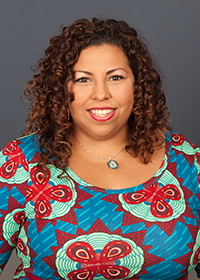Scholarships are one of the best ways to pay for college. They can help you pay for your education without increasing your debt. Here’s what you need to know so you can keep and maximize every scholarship dollar you win.
Types of scholarships
Institutional scholarships come from your college or university. These can cover some of your costs (or even your total cost) of going to school.
Private scholarships are awarded by private foundations, companies, and service groups. Unlike institutional scholarships, there is no limit to the number of private scholarships you can apply for (and win). Just keep in mind there will still be limits on what you can spend your scholarship money on.
Reporting your scholarships
All scholarship money must be reported to the financial aid office at your school. For institutional scholarships, the money you’ve been awarded has already been recorded by your college or university. When you win a private scholarship, however, either you or the organization that gave you the scholarship will need to report it to the financial aid office. It’s good to clarify this once you’ve been notified of your award.
Where the money goes
While institutional scholarship money typically remains at your school to pay costs in your student account (tuition, fees, books, etc.), many times, private scholarship money will also be sent directly to your school for the same purpose.
When this happens, your school will usually replace your loans with your scholarships. Federal loans should also be reduced if an out-of-pocket balance isn’t owed when your scholarships come in.
Protecting your scholarship money
Once any private scholarships are reported and your school has the money, it’s important to know that your school may decrease your institutional scholarships and grants by the amount you’ve won in private scholarships.
To make sure that doesn’t happen, contact your financial aid office and request that your private scholarships be used in addition to your institutional scholarships and grants. But there may be additional things you need to do to make sure your scholarship money stays available to you.

How to keep as much scholarship money as possible
Let’s say you’ve made sure that your private scholarships are going to be used on top of your institutional scholarships. Your college may still send any extra money you’ve won back to the organization that gave it to you in the first place.
That means you lose out on all that money to help pay for school. To avoid this, you have a few options:
Contact your scholarship provider to see if they will delay sending part or all of your scholarship money to your institution. This can help you keep the money you need for your current semester expenses, and lets you use the rest for future semesters.
If your scholarship provider won’t delay your scholarship, work with your financial aid office to see if they can hold it for future semesters. If they agree, your financial aid office will defer using your leftover private scholarship money until the following semester.
If your financial aid office won’t hold onto your scholarship money, see if they’ll increase what is included in your cost of attendance. This may seem counterintuitive — isn’t college expensive enough already? However, this may be your best shot at keeping as much scholarship money as possible. But you still need to be mindful of what you can (and can’t) spend it on.
What you can use scholarship money on
There are plenty of helpful, school-related items you can purchase with scholarship money. Just work with your financial aid office to make sure they’ll allow it.
Examples of things beyond tuition, etc., that you can spend scholarship money on:
- A new laptop. Some courses will require you to use a computer for assignments, and having a functional laptop will help immensely. Your financial aid office may let you use the cost of a new laptop to raise your cost of attendance.
- Rent and costs of living. If your financial aid office factors room and board into your cost of attendance, then you may be able to use some of your scholarship money to cover costs like rent and utilities.
Things you can’t spend scholarship money on:
- A car. While you may not be able to use scholarship money on purchasing a car, you may be able to get other transportation costs covered, like gas and public transportation expenses. If you have to commute to class, work with your financial aid office to see what they’ll include in your cost of attendance.
- A new phone. Having a phone is important, but you might have a hard time getting your financial aid office to agree to this one. However, using the ideas above could save you enough money on paying for college to free up funds for a new phone.
Adding items or expenses that increase your cost of attendance may allow you to reverse-engineer a way to use more of your scholarship money. (Sorry, though, no ski trips in Aspen paid via scholarship)
Finding more scholarship money
It never hurts to find more scholarship money in college. Use scholarship search tools like College Board’s Scholarship Finder, which can help you find money for college so you can graduate with less student debt and enjoy more of your pay in your future career.
 About Melanie
About Melanie
I am a Financial Coach for college students and parents. I am an Accredited Financial Counselor (AFC®) and received my BBA in Management from Texas State University. I help students understand their financial aid and help them develop a plan to achieve their educational and financial goals. I was a first-generation college student, so I have a personal understanding of some of the struggles students face.
Working in the financial aid industry for 13 years has given me the opportunity to work with students at different points in their life from starting college to graduating and finding a job — all the way through helping them repay their student loans and save for the future.
This service is not intended to constitute any tax, investment or legal advice. If you need investment, legal, tax advice, and/or credit counseling, please consult with a professional within those areas.
Links to third-party financial resources are provided as a convenience for informational purposes only. Trellis Company does not endorse or approve any of the products, services or opinions of the entities or individuals associated with these links. Trellis Company bears no responsibility for the accuracy, legality or content of any external site associated with the links provided or any subsequent links.
|
Read this to me
|









